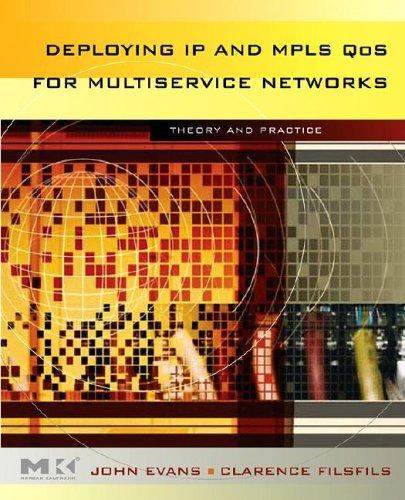
Deploying IP and MPLS QoS for Multiservice Networks
by John William Evans, Clarence Filsfils
ISBN-10: 0123705495
ISBN-13: 9780123705495
$70.95
Book Specs
Binding
Trade Cloth
Publisher
Morgan Kaufmann
Published on
Apr 23, 2007
Edition
1st Edition
Dimensions
7.64x1.05x9.50 Inches
Weight
2.09 Pounds
About the Book
QoS, short for "quality of service," is one of the most important goals a network designer or administrator will have. Ensuring that the network runs at optimal precision with data remaining accurate, traveling fast, and to the correct user are the main objectives of QoS. The various media that fly across the network including voice, video, and data have different idiosyncrasies that try the dimensions of the network. This malleable network architecture poses an always moving potential problem for the network professional.
The authors have provided a comprehensive treatise on this subject. They have included topics such as traffic engineering, capacity planning, and admission control. This book provides real world case studies of QoS in multiservice networks. These case studies remove the mystery behind QoS by illustrating the how, what, and why of implementing QoS within networks. Readers will be able to learn from the successes and failures of these actual working designs and configurations.
